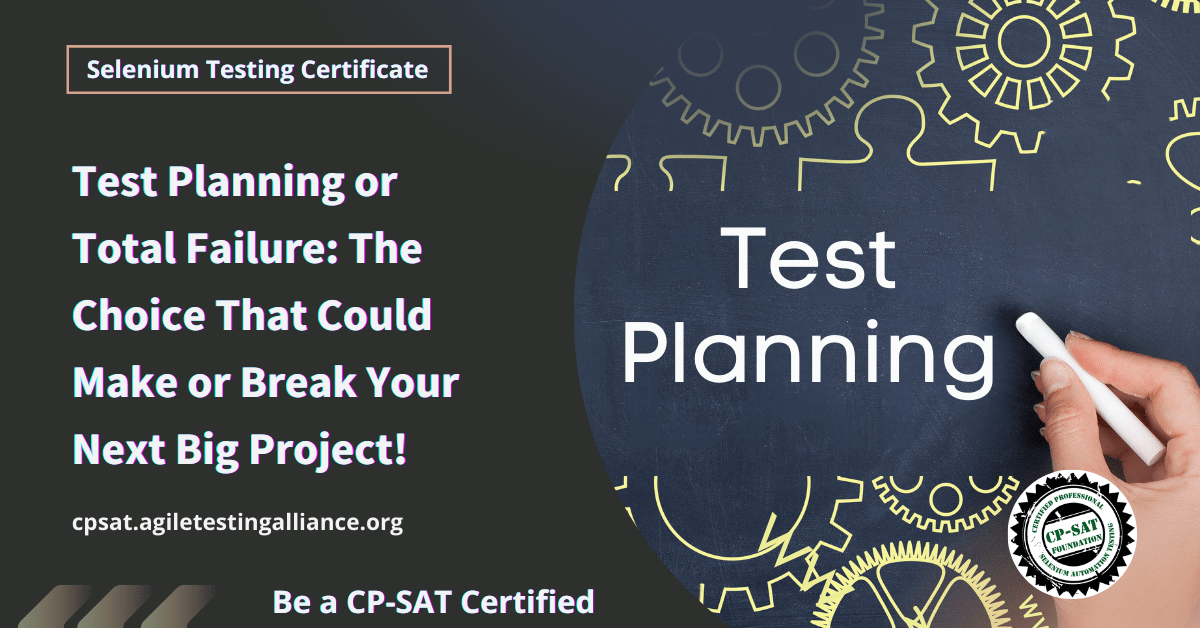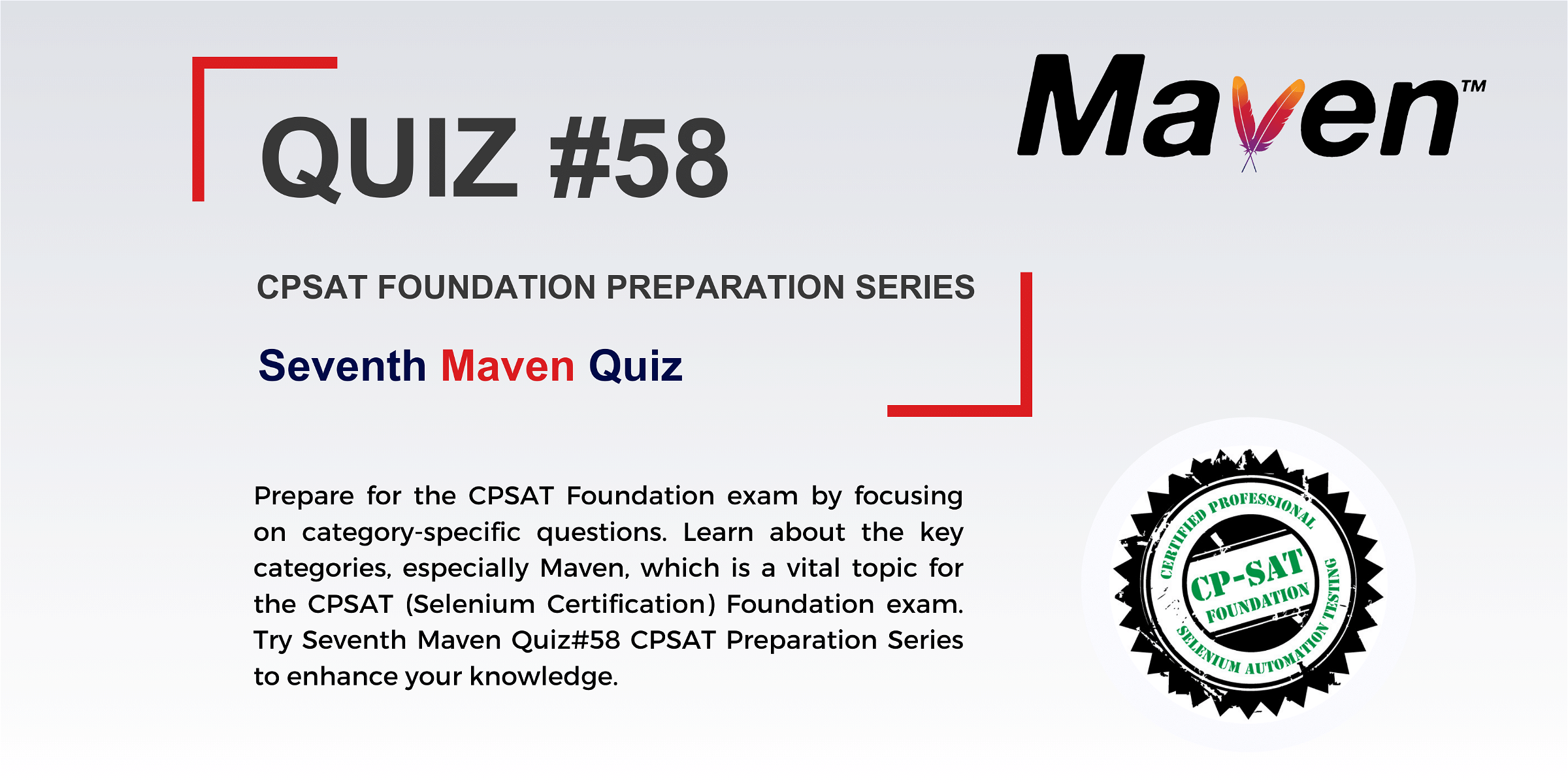Test Planning or Total Failure: The Choice That Could Make or Break Your Next Big Project!

Table of Contents
Introduction
In the fast-paced world of software development, the line between success and failure often hinges on one critical phase: test planning. It’s the unsung hero of the development lifecycle, quietly dictating the fate of projects around the globe. Yet, despite its importance, it’s startling how often this crucial step is overlooked or underestimated.
Let’s take a moment to consider the stakes. In an era where software not only powers our businesses but our daily lives, the margin for error is razor-thin. A glitch in a financial app can lead to significant monetary loss, while a bug in healthcare software could have even more dire consequences. This global perspective underscores the universal truth: thorough test planning isn’t just a best practice; it’s a necessity.
Now, you might wonder, what makes test planning so pivotal? In essence, it’s the blueprint for success. It ensures every test case is aligned with your project’s objectives, guaranteeing that every feature works as intended across different environments and scenarios. This meticulous approach to testing doesn’t just identify bugs; it predicts and prevents them, safeguarding the quality of your project from the outset.
However, the journey to mastering test planning and leveraging test automation, such as Selenium testing, isn’t without its challenges. Cultural differences, technological barriers, and resource limitations can all pose significant hurdles. Yet, these challenges also present opportunities for innovation and collaboration across the global software testing community.
As we dive deeper into the world of test planning and automation, remember: the choices we make today can either elevate our projects to new heights or lead them down the path to failure. The key lies in embracing test planning as an integral part of our development process, learning from each other’s experiences, and continuously adapting to the ever-evolving technological landscape.
In this blog, we’ll embark on a journey through the intricacies of test planning. From defining its core components to exploring global trends and best practices, we’ll uncover the strategies that successful projects employ to ensure their success. So, whether you’re a seasoned developer, an aspiring tester, or simply fascinated by the world of software, join me as we explore how test planning can make or break your next big project.
The Global Landscape of Software Testing and Test Automation
As we navigate the vast expanse of software testing and test automation, it’s clear that this field is not just evolving—it’s thriving on a global scale. The landscape is as diverse as it is dynamic, with each region contributing its unique perspective and practices to the tapestry of software quality assurance. From the bustling tech hubs of Silicon Valley and Bangalore to the emerging markets in Africa and Latin America, the approach to software testing and automation is being redefined, reflecting both local and global trends.
Let’s start with a fundamental truth: the demand for high-quality software is universal. However, the way we meet this demand varies widely. In North America and Europe, for instance, there’s a heavy emphasis on agile methodologies and DevOps practices, integrating testing seamlessly into the development lifecycle. Here, automation tools like Selenium have become staples, not just for their efficiency but for their ability to adapt to rapid development cycles.
Conversely, in regions like Asia and the Middle East, where traditional waterfall models were once predominant, there’s a noticeable shift towards agile and continuous integration/continuous deployment (CI/CD) frameworks. This transition isn’t just about adopting new tools; it’s about fostering a culture that embraces change, collaboration, and continuous learning.
But what’s driving this global shift towards test automation? Simply put, the complexity and scale of modern software applications. Manual testing, while invaluable, can’t keep pace with the demands of today’s digital economy. Automation isn’t just a luxury; it’s a necessity for ensuring that applications are robust, resilient, and ready to meet user expectations.
Here’s where Selenium testing shines. As an open-source tool, it democratizes test automation, making it accessible to teams regardless of size or budget. Its flexibility in simulating a wide range of browsers and devices is particularly crucial in a world where users access software from an ever-expanding array of platforms.
Yet, embracing test automation and tools like Selenium brings its own set of challenges. Skill gaps, tool selection dilemmas, and integration issues are common hurdles. However, these challenges also serve as a rallying point for the global community. Online forums, webinars, and conferences have become melting pots of knowledge, with professionals from around the world sharing insights, strategies, and best practices.
The Essence of Test Planning
At the heart of any successful software project lies a well-crafted test plan. It’s the roadmap that guides us through the complex terrain of software testing, ensuring that every step we take is deliberate, efficient, and aligned with our goals. But what exactly makes test planning so essential? Let’s dive into the core of test planning and uncover its pivotal role in the world of software development and testing.
First and foremost, test planning is about clarity. It provides us with a clear vision of what needs to be tested, how it will be tested, and who will be responsible for each task. This clarity is invaluable, as it helps prevent misunderstandings and ensures that everyone on the team is on the same page. In a global context, where teams might be spread across different time zones and cultural backgrounds, such clarity becomes even more crucial for seamless collaboration.
Moreover, test planning is inherently strategic. It allows us to prioritize our testing efforts, focusing on areas of the application that are most critical to user satisfaction or most likely to contain defects. This strategic approach ensures that our resources—time, manpower, and tools—are allocated in the most effective way possible. In an era where deadlines are tight and budgets are tighter, the ability to maximize efficiency without compromising quality is a game-changer.
Transitioning to the nuts and bolts, test planning involves defining specific, measurable objectives. These objectives are not just arbitrary targets; they are aligned with the project’s overall goals and customer expectations. Whether it’s achieving a certain level of code coverage or ensuring compatibility across multiple platforms, these objectives provide a benchmark for success, enabling us to measure our progress and make informed decisions.
But test planning isn’t just a solitary exercise; it’s a collaborative endeavor. It brings together developers, testers, project managers, and stakeholders, fostering a culture of transparency and mutual accountability. Through regular reviews and updates to the test plan, we create an environment where feedback is valued, and continuous improvement is the norm. This collaborative spirit is particularly vital in the global arena, where diverse perspectives can lead to innovative solutions and a deeper understanding of user needs.
Lastly, test planning is dynamic. Just as the software we develop evolves, so too must our approach to testing it. Flexibility is built into the fabric of test planning, allowing us to adapt to new challenges and opportunities as they arise. Whether it’s integrating new test automation tools like Selenium, responding to changing market demands, or addressing unforeseen issues, a robust test plan is designed to accommodate change, ensuring that our testing processes remain relevant and effective.
In essence, test planning is more than just a phase in the software development lifecycle; it’s a philosophy that underscores the importance of foresight, strategy, and collaboration in achieving software excellence. As we navigate the complexities of modern software projects, let us remember that a thoughtful, well-executed test plan is not just beneficial—it’s essential for success.
Best Practices for Effective Test Planning
In the realm of software testing, crafting an effective test plan is both an art and a science. It’s a process that demands a strategic mindset, meticulous attention to detail, and a deep understanding of the project at hand. As we explore the best practices for effective test planning, remember, these aren’t just guidelines but stepping stones to elevating the quality of your software to new heights. Let’s delve into these practices with a focus on how they can be applied globally, across diverse projects and teams.
1. Start with a Clear Understanding of Your Objectives
The first step towards effective test planning is to define clear, concise, and achievable objectives. What are you aiming to accomplish with your testing? Is it to ensure functionality, improve user experience, or assess performance under load? Setting these objectives early on guides your entire testing process, ensuring every action taken contributes towards achieving these goals. This clarity is especially crucial in a global context, where teams need to align their efforts across different regions and cultures.
2. Engage Your Team Early and Often
Test planning should never be a siloed activity. Engage your development team, project managers, and stakeholders from the outset. This collaborative approach ensures that all perspectives are considered, leading to a more comprehensive test plan. Furthermore, regular communication keeps everyone informed of progress and any adjustments needed as the project evolves. In a global team, leveraging collaboration tools can bridge the gap between different time zones and geographical locations, fostering a cohesive and synchronized effort.
3. Incorporate Risk-Based Testing
Not all parts of your application carry the same risk or impact on the end-user experience. Adopting a risk-based approach to testing allows you to prioritize your testing efforts on the areas that matter most. Identify the high-risk areas early in your planning process and allocate your resources accordingly. This approach not only improves efficiency but also ensures that critical issues are addressed promptly, an essential strategy for teams working on tight schedules or with limited resources.
4. Make Room for Flexibility
The only constant in software development is change. Your test plan should be flexible enough to adapt to changes in project scope, design, or timelines. This flexibility is vital for managing the unexpected challenges that inevitably arise during the development process. Incorporating agile methodologies into your test planning can provide the structure needed to accommodate these changes without derailing your project.
5. Leverage Automation Wisely
Test automation, when used correctly, can significantly enhance the efficiency and effectiveness of your testing. Tools like Selenium offer powerful capabilities for automating repetitive and time-consuming tests, allowing your team to focus on more complex and high-value testing activities. However, it’s crucial to choose the right tests to automate. Focus on tests that are run frequently and require high reliability to ensure your automation efforts deliver maximum value.
6. Continuously Review and Revise Your Plan
A test plan is a living document. As your project progresses, take the time to review and adjust your plan based on new insights, feedback, and changes in project direction. This continuous revision ensures your testing remains aligned with your project goals and adapts to any new challenges or opportunities that arise.
By following these best practices, you can ensure that your test planning is not just a procedural step, but a strategic tool that drives the success of your software projects. Whether you’re working within a local team or coordinating efforts across the globe, these principles offer a foundation for achieving excellence in software quality and reliability.
Tools and Technologies
In the ever-evolving landscape of software testing and test automation, the tools and technologies we choose are not just facilitators but catalysts for success. With a myriad of options at our disposal, selecting the right tools can seem daunting. Yet, it’s this very choice that can elevate our testing strategies from good to great. Let’s navigate the rich ecosystem of testing tools and technologies, focusing on how they can be leveraged to achieve our testing objectives, enhance efficiency, and drive innovation.
Embracing Selenium for Web Automation
When it comes to automating web browsers for testing web applications, Selenium stands out as a beacon of versatility and power. Its ability to mimic real user interactions across multiple browsers and platforms makes it an indispensable tool in our arsenal. Whether you’re running simple unit tests or complex acceptance tests, Selenium offers a flexible framework that integrates seamlessly with your existing tools and workflows. Its open-source nature not only democratizes access but also fosters a global community of contributors, ensuring the tool remains at the forefront of web testing technologies.
Leveraging Jenkins for Continuous Integration
In the spirit of agile development and continuous delivery, Jenkins emerges as a cornerstone for automating the integration of code changes. Its robust ecosystem of plugins allows for the creation of custom pipelines, automating everything from builds to testing, and deployment. By integrating Jenkins into our test planning, we can ensure that every code commit is automatically tested, reducing the time to discover and fix defects. This continuous feedback loop is invaluable, especially in global projects where teams work in different time zones, as it ensures a constant pace of development and testing.
Exploring Postman for API Testing
As applications grow more complex and interconnected, testing APIs becomes crucial. Postman offers an intuitive platform for creating, sharing, and executing API tests. Its user-friendly interface and powerful features, such as environment variables and pre-request scripts, simplify the process of testing APIs, making it accessible to both developers and testers. By incorporating Postman into our testing strategy, we can ensure the reliability and performance of our APIs, which are often the backbone of our applications.
Adopting JIRA for Test Management
Effective test management is the glue that holds our testing strategies together. JIRA, with its extensive capabilities for tracking issues and project management, has become a favorite among testers and developers alike. Its flexibility allows us to tailor the tool to our project’s specific needs, whether it’s managing test cases, tracking bugs, or facilitating communication between team members. For global teams, JIRA’s collaborative features enable real-time updates and transparency, ensuring everyone is aligned and informed, regardless of their location.
Harnessing the Power of TestRail for Test Case Management
Organizing, managing, and tracking test cases can quickly become overwhelming. TestRail provides a comprehensive solution, offering a centralized platform for managing test cases, test runs, and tracking results. Its intuitive interface and powerful reporting capabilities give us the visibility we need to make informed decisions about our testing efforts. By integrating TestRail with automation tools like Selenium, we can streamline our testing process, making it more efficient and effective.
Overcoming Common Challenges in Test Planning
Embarking on the journey of test planning is akin to navigating a labyrinth; it’s filled with twists, turns, and unexpected challenges. Yet, it’s precisely these challenges that hone our skills and refine our strategies, making us better testers and developers. In the spirit of collective growth and improvement, let’s explore some of the common challenges in test planning and how we can overcome them, ensuring our projects are not just completed but excel.
Challenge 1: Defining Clear Testing Objectives
One of the first hurdles we encounter is the task of setting clear, achievable testing objectives. Without these, our testing efforts can become directionless, impacting the effectiveness of the entire project. The solution? Start with the end in mind. Engage with stakeholders to understand their expectations and the project’s critical success factors. This collaboration ensures that the objectives you set are aligned with the project’s goals, providing a focused and purposeful direction for your testing efforts.
Challenge 2: Managing Time and Resources
Time and resources are often in short supply, making their efficient management crucial. The key to overcoming this challenge is in meticulous planning and prioritization. Utilize risk-based testing to prioritize test cases, focusing on those that are critical to the application’s functionality and user experience. Automation tools like Selenium can also be a game-changer here, automating repetitive tasks and freeing up your team to focus on more complex testing scenarios.
Challenge 3: Keeping Up with Changing Requirements
In today’s agile world, requirements can change at a dizzying pace. Staying aligned with these changes requires flexibility and continuous communication. Implement agile testing methodologies, which emphasize adaptability and ongoing collaboration with the development team. Regular stand-ups and sprint reviews can help ensure that any changes in requirements are immediately reflected in your test plan, keeping your testing efforts relevant and effective.
Challenge 4: Ensuring Test Coverage and Quality
Achieving comprehensive test coverage without compromising quality is a delicate balancing act. The temptation to cut corners in the face of tight deadlines is real, but the consequences can be severe. To navigate this, leverage test case management tools like TestRail, which can help organize and track the completeness of your testing. Pair this with code coverage tools to ensure that all critical paths are tested, providing a safety net that ensures high-quality outcomes.
Challenge 5: Bridging Skill Gaps
The rapid evolution of technology means that skill gaps can quickly emerge, potentially hampering your testing efforts. Cultivating a culture of continuous learning within your team is essential. Encourage participation in workshops, webinars, and conferences. Online platforms offer a wealth of resources for upskilling in areas like test automation, performance testing, and security testing. Remember, a team that grows together, succeeds together.
In overcoming these challenges, we not only ensure the success of our projects but also contribute to the growth and resilience of the global software testing community. By sharing our experiences and solutions, we can help lift each other up, navigating the labyrinth of test planning with confidence and expertise. Let’s continue to push the boundaries, innovate, and support one another in our quest for excellence in software testing and automation.
The Future of Test Planning in Global Tech Agility Scenario
As we stand on the precipice of a new era in software development, the winds of change are sweeping across the global tech landscape, bringing with them a renewed focus on agility, innovation, and resilience. The future of test planning, in this ever-evolving scenario, promises to be both exciting and challenging. Let’s embark on a journey to explore what lies ahead, armed with curiosity and a determination to adapt, innovate, and excel.
Embracing Agility at Every Step
The cornerstone of future test planning lies in embracing agility not just as a methodology but as a mindset. As global projects become more complex and timelines more compressed, the traditional approaches to test planning are being reevaluated. The future will see test plans that are dynamic, continuously updated, and tightly integrated with development cycles. This agility allows us to respond swiftly to changes, ensuring that our testing strategies are always aligned with current project needs and objectives.
Leveraging AI and Machine Learning
Artificial Intelligence (AI) and Machine Learning (ML) are set to redefine the parameters of test planning and execution. Imagine predictive test planning, where AI algorithms analyze historical data to predict potential problem areas or the impact of changes on testing requirements. Automation tools will become smarter, capable of self-learning and adapting testing strategies based on real-time feedback. This integration of AI and ML will not only enhance efficiency but also elevate the quality of testing by uncovering insights that were previously inaccessible.
The Rise of Continuous Testing
In the realm of global tech agility, continuous testing emerges as a pivotal practice. It extends beyond the realm of continuous integration and delivery (CI/CD), embedding testing into every phase of the development lifecycle. This means that testing is not a phase but a continuous process, ensuring that feedback loops are short and development is always informed by the latest test results. The future of test planning will necessitate tools and processes that support this continuous approach, ensuring that testing can keep pace with rapid development cycles.
Fostering Global Collaboration
The future will underscore the importance of collaboration across distributed teams, necessitating tools and practices that support seamless communication and coordination. Cloud-based test management tools and platforms that offer real-time updates and integrations with project management software will become the norm. These technologies will bridge the gap between teams spread across the globe, fostering a unified approach to test planning and execution, regardless of physical location.
Prioritizing Security and Performance
As digital transformation accelerates, the focus on security and performance within test planning will intensify. Testing strategies will need to evolve to address the increasing sophistication of cyber threats and the growing demands for high-performing, scalable applications. This will require a holistic approach to test planning, where security and performance are considered at every stage of development, ensuring that applications are not just functional but also secure and efficient.
Conclusion
As we bring our exploration of the vibrant and ever-evolving world of software testing and test automation to a close, it’s clear that the journey we’re on is both challenging and incredibly rewarding. The landscape of test planning is not static; it’s a dynamic, ever-shifting terrain that demands our adaptability, creativity, and commitment to excellence. But amidst these challenges lies a wealth of opportunity—an opportunity to innovate, to enhance the quality of software worldwide, and to make a tangible impact on the projects and communities we serve.
A Call to Embrace Change
The future beckons us to embrace change, not as a daunting obstacle, but as a door to new possibilities. Whether it’s through integrating cutting-edge tools like Selenium, leveraging the power of AI and ML in our test strategies, or adopting a mindset of continuous testing, the path forward is clear. It’s one that encourages us to remain lifelong learners, always curious, always willing to explore new methodologies and technologies that can elevate our practice of test planning.
The Power of Community
Remember, we are not alone in this journey. The global software testing and test automation community is a vibrant tapestry of individuals and teams, each bringing their unique insights, experiences, and innovations to the table. By fostering a spirit of collaboration and sharing our knowledge freely, we can overcome any challenge and achieve remarkable things. The conversations we have, the forums we participate in, and the conferences we attend—all of these are opportunities to connect, learn, and grow together.
Commitment to Quality
At the heart of everything we do is a commitment to quality. This commitment transcends borders, languages, and cultures, uniting us in a common goal: to deliver software that is not just functional, but truly exceptional. By adhering to best practices in test planning, continuously refining our strategies, and embracing the tools and technologies that drive efficiency and effectiveness, we can ensure that our projects stand the test of time.
Looking Ahead
As we look to the future, let’s do so with optimism and determination. The challenges we face today are the stepping stones to tomorrow’s breakthroughs. The insights we gain from each project, the lessons we learn from each failure, and the successes we celebrate—all contribute to the depth of our expertise and the strength of our community.
In conclusion, the journey of software testing and test automation is one of perpetual growth and innovation. Let’s continue to push the boundaries of what’s possible, armed with the knowledge that in our quest for excellence, we have the power to shape not just the future of software but the future of our world. Together, let’s embark on this next chapter with enthusiasm, ready to tackle the challenges ahead and seize the opportunities that await. The future of test planning is bright, and it’s ours to shape.










